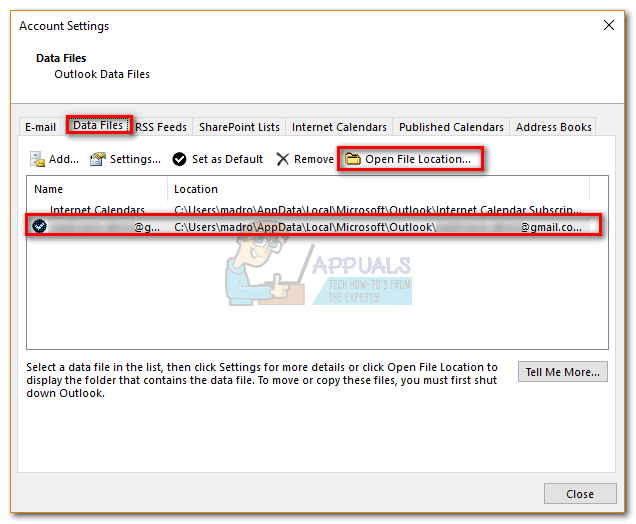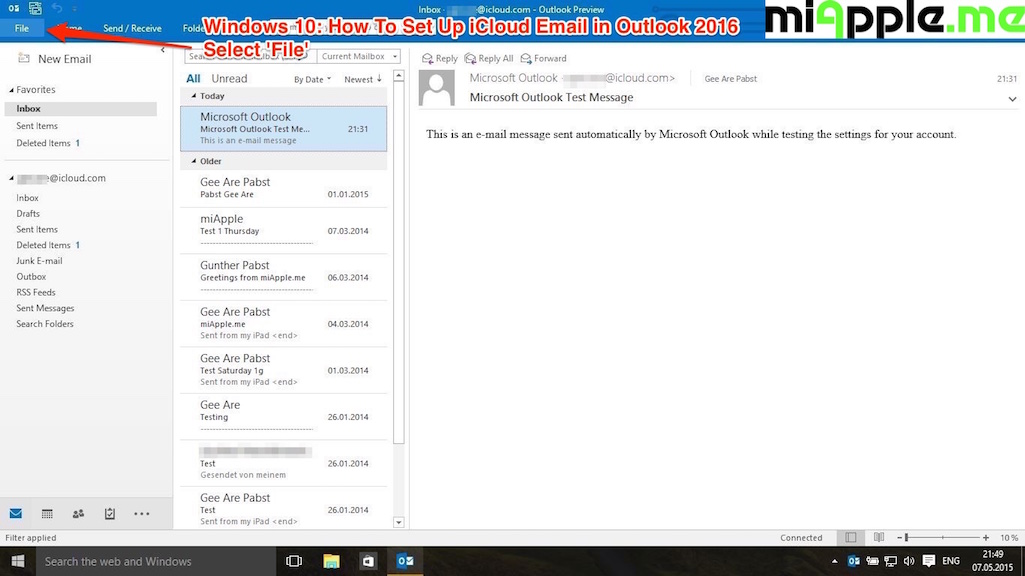

- #LOCATING THE OUTLOOK DATA FILES HOW TO#
- #LOCATING THE OUTLOOK DATA FILES OFFLINE#
- #LOCATING THE OUTLOOK DATA FILES DOWNLOAD#
- #LOCATING THE OUTLOOK DATA FILES WINDOWS#
#LOCATING THE OUTLOOK DATA FILES WINDOWS#

#LOCATING THE OUTLOOK DATA FILES HOW TO#
Go to the end, if you want to know where PST files are located and how to move them to another hard drive to save space.īefore locating the different Outlook files, you need to unhide the files to view it. It always provides good support for regular POP3 and IMAP accounts as well as calendar and reminder system and also made a lot of progress in recent years to working well with email services like Gmail and.

Microsoft Outlook is one of the best desktop email clients for Windows and most businesses and individuals use the Microsoft Exchange email server. In this blog, we will know where are Outlook PST files located in Windows on the basis of different Outlook versions. To find out where is the Outlook location of all these files depends on what version of Outlook you are using. htm), Send/Receive settings (.srs), and etc.
#LOCATING THE OUTLOOK DATA FILES OFFLINE#
For example, you might want to have an address book that contains only clients, relatives, club members, neighborhood contacts, parents and teachers from your child’s school, or sports teammates.Where is My Outlook file Location in Microsoft Windows? How To Locate Outlook Files?Īs you know that MS Outlook stores email for each account in a personal storage table (PST) file, but also saves the different files such as: Personal Address Book (.pab), Offline Address Books (.oab), Outlook contacts nicknames (.nk2), Signatures (.rtf. However, you might find it useful to create a separate address book that contains contact records for only a specific group of people. You can track all your contacts-business and personal-within the address book of your default email account. Exchange Server also provides a Global Address List (GAL), which is an address book maintained centrally by your Exchange administrator. If you connect to a Microsoft Exchange Server account, the default address book is part of that account, and the information you store in the address book is available on all devices from which you connect to your account. The default address book content is stored in a folder named Contacts. Outlook displays your default address book when you click the People link or button on the Navigation Bar. If an exercise requires an item that you don’t have, you can complete the exercise in which you create the item before beginning the current exercise, or you can substitute a similar item of your own. The exercises in this chapter also use Outlook items you created in exercises in previous chapters.
#LOCATING THE OUTLOOK DATA FILES DOWNLOAD#
For more information, see Download the practice files in this book’s Introduction. To complete the exercises in this chapter, you need the practice files contained in the Chapter09 practice file folder. Finally, you’ll personalize the content of an electronic business card. You’ll locate specific contact records by using the Search feature and the commands available on the new Search tool tab. Then you’ll create a contact group and send a message to a subset of the group. You’ll import a fresh set of contact records into the custom address book, and then export a subset of the records. In this chapter, you’ll first organize the contact records associated with this book into an individual address book. You can also display images, such as photographs or corporate logos on business cards, to provide additional information when you view contacts in the default Business Card view. Within each contact record, you can make preferred contact information easily discoverable by displaying it on the electronic business card version of the contact record. The Search feature of Outlook 2013 makes it easy to find a specific contact record based on any text within the contact record or any attribute, such as a color category that you assign to it. You can add contact records to a custom address book either by moving contact records that are already stored in Outlook, or by importing contact records from another program or file. You can also create purpose-specific address books and organize contact records within the address books to make it easier to locate specific contact records. You can simplify communications with specific groups of people by creating contact groups to which you can address messages as you would an individual contact. The more people you deal with on a daily basis, the more important it is to keep your contact list organized. Being able to organize and quickly locate specific contact information is important for efficient communications. If you regularly save contact information for business and personal contacts in Microsoft Outlook, you will quickly accumulate a large collection of contact records.


 0 kommentar(er)
0 kommentar(er)
